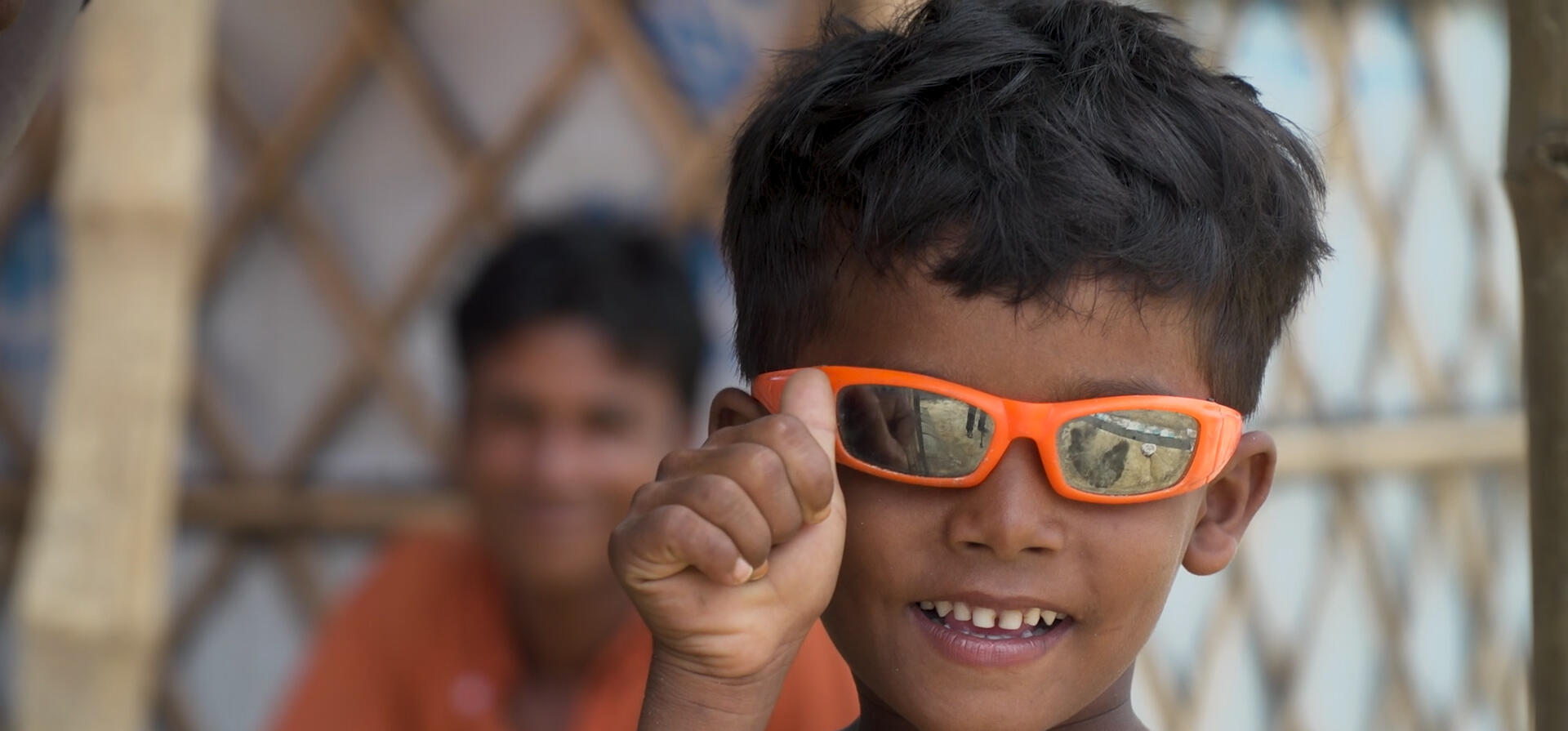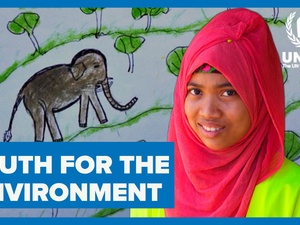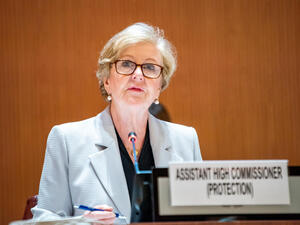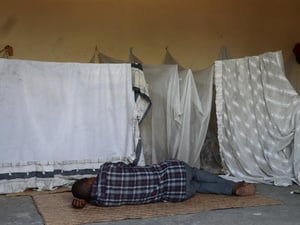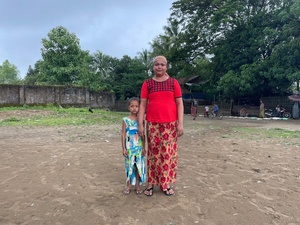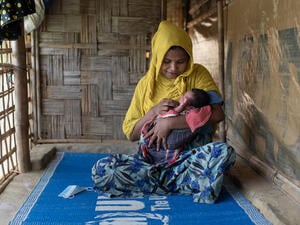Supporting Rohingya refugees and their hosts in Bangladesh
Inside a bamboo shelter in the world’s largest refugee settlement, Rohingya refugee Syed Hossain, 27, hoists up his shirt to show a constellation of blisters on his torso.
“I noticed the symptoms four or five days ago,” he says, noting that five of his children have it too. “I’ve had pain all over my body, then headache and fever. I wasn’t eating.”
An outbreak of chickenpox in recent weeks has infected some 5,000 Rohingya children and adults in the vast Kutupalong settlement. While the varicella-zoster virus is often seen as low risk, it has proven more perilous here, among a population who were unable to get vaccinated in Myanmar and are now living in a densely inhabited area with insufficient sanitation and hygiene.
“It's more dangerous for the children here in the camp because they are immunocompromised, they don't have vaccination and many of them are malnourished,” said Dr. Mahzabin Hoque, a Bangladeshi general practitioner who has worked in the camp since September 2017.
She added: “When the varicella first broke out, you would find most of the children with complications like tonsillitis and pneumonia and diarrhoea. And the environment here is more prone to infections, so when the blister bursts, then it's very dangerous.”
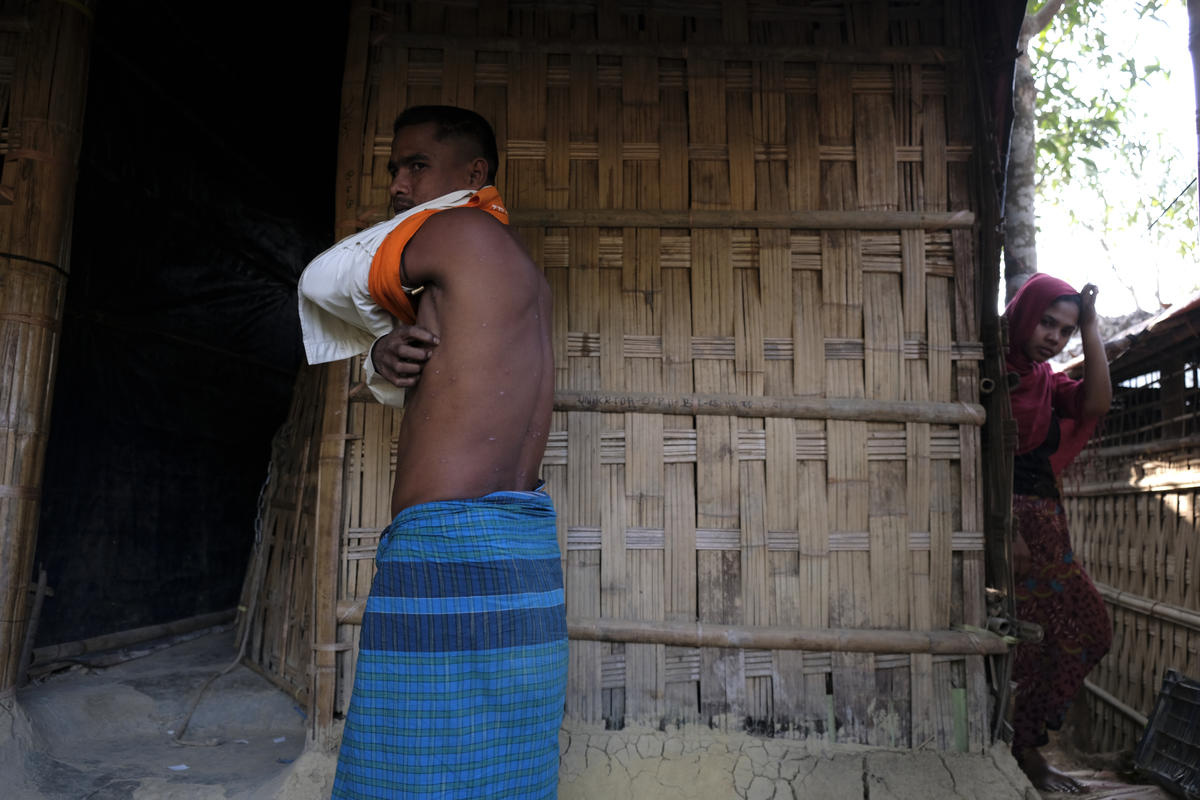
Rohingya refugee Syed Hossain, 27, shows his chickenpox scars in Kutupalong refugee settlement, Bangladesh.
Chickenpox is one of a myriad of challenges faced by nearly a million stateless Rohingya refugees who have sought safety in Bangladesh, more than 745,000 after a government crackdown in August 2017 drove them from their homes in Myanmar’s northern Rakhine State.
In a huge push to meet both their massive needs, and those of the 330,000 local Bangladeshis, the United Nations aid agencies and NGO partners today launched the 2019 Joint Response Plan (JRP).
It seeks US$920 million, more than half of which is earmarked for aid and services such as food, water, sanitation and shelter. Other key sectors include health, site management and activities such as child protection and addressing sexual and gender-based violence, education and nutrition.
Over the past 12 months aid agencies have worked to improve conditions across refugee settlements through the support provided under the 2018 JRP – providing basic assistance, upgrading living conditions and putting in place disaster risk mitigation measures for the monsoon and cyclone seasons. Strides have also been made in boosting access to healthcare, curbing disease outbreaks, and reducing malnutrition.
“Our humanitarian imperative today is to stabilize the situation of stateless Rohingya refugees and their Bangladesh hosts."
Funds sought this year would also go to support the Bangladeshis in greatest need in the local community, many of whom rushed to help at the start of the crisis in 2017 as thousands of famished and exhausted children, women and men stumbled in each day under driving monsoon rains. Their swift response, and subsequent generosity, saved countless lives.
“Our humanitarian imperative today is to stabilize the situation of stateless Rohingya refugees and their Bangladesh hosts. We are hoping for timely, predictable and flexible contributions in order to meet the goals of this year’s appeal,” said UN High Commissioner for Refugees Filippo Grandi.
The greatest needs of both communities are already being addressed with projects ranging from road building to, water and sewage treatment facilities, together with medical clinics that support both refugees and Bangladeshis alike.

Rohingya refugee Noor Salam (in white) talks to his Bangladeshi friend Abdul Quddus at the Physiotherapy and Physical Rehabilitation Centre in Shamlapur.
Among them is a physiotherapy centre funded by UNHCR, the UN Refugee Agency, and run by its partner, Gonoshasthaya Kendra which opened in Teknaf last year. The first in the area, it treats around 35 patients per day, two thirds of them from the local community.
Among the patients earlier this month was Noor Salam, a Rohingya refugee and stroke patient who received vital treatment alongside a retired Bangladeshi medical doctor, Abdul Quddus, who was himself also recovering from a stroke.
“It is great to have someone here who is not just a friend, but also a good doctor.”
“It is great to have someone here who is not just a friend, but also a good doctor,” Noor told him during a recent session. Noor thanked Abdul for helping translate the local dialect for physiotherapists from northern Bangladesh.
For his part Abdul, who lost his wife last year, appreciates the opportunity to simply get out, make friends and feel useful.
“I was unable to walk around the neighbourhood like before and talk to people,” he says. “Apart from home, this centre has been the only place I have been able to visit for a few months and the other patients became my only friends.”


